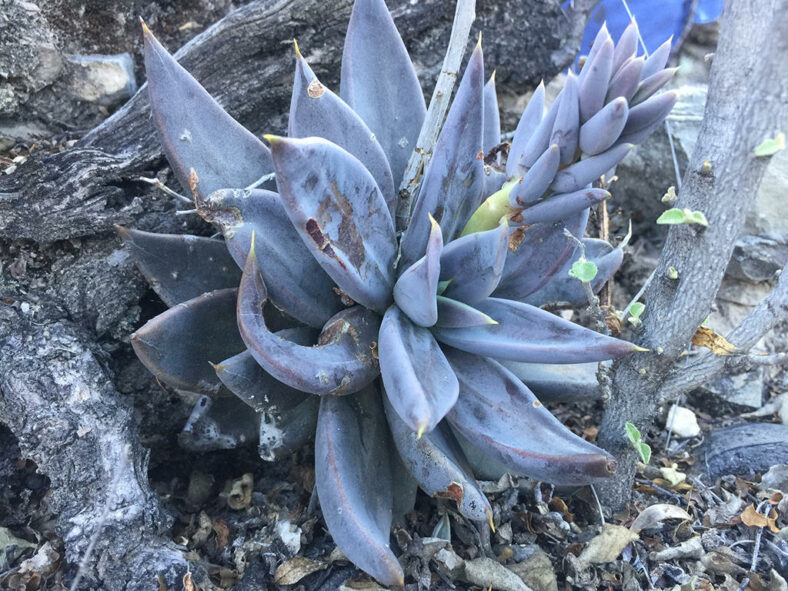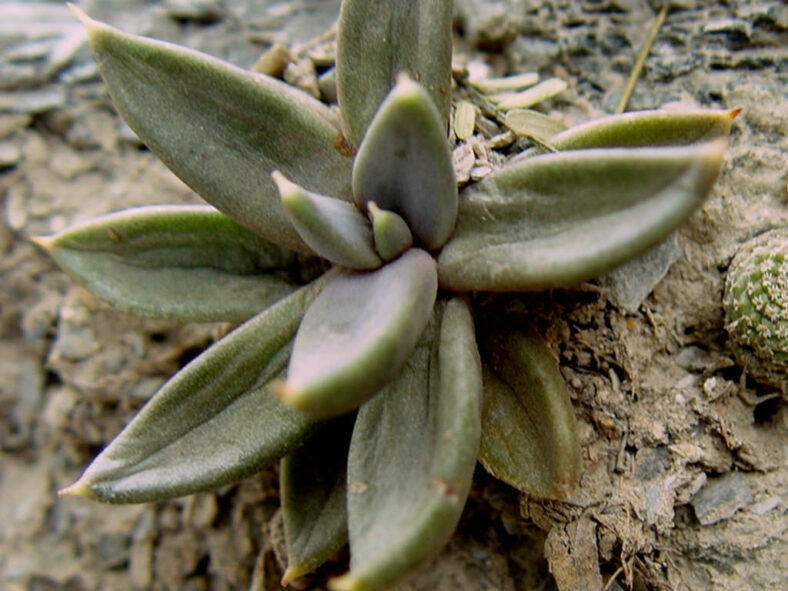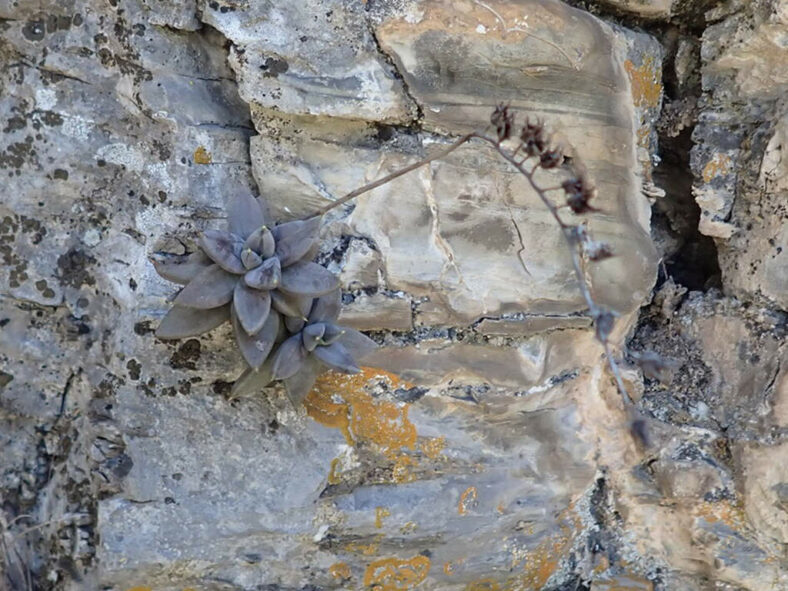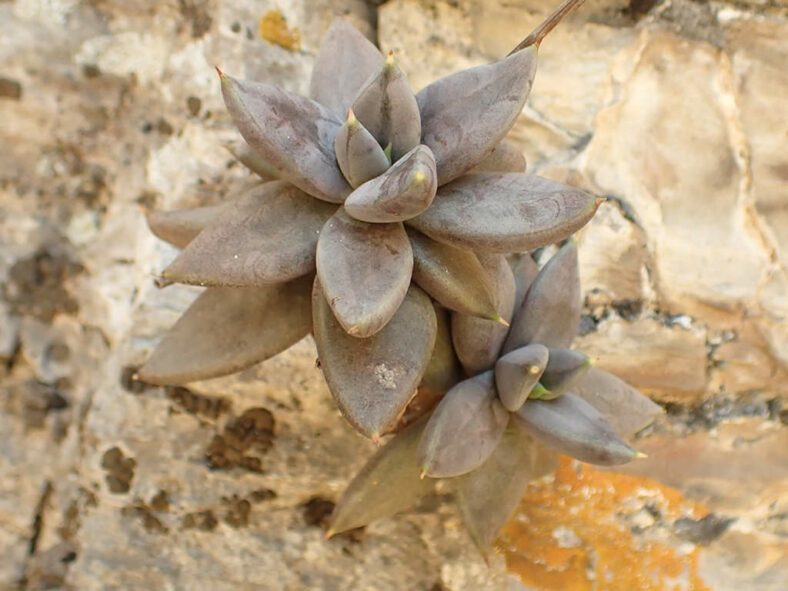Echeveria humilis is a beautiful, low-maintenance plant that displays its most vibrant colors in the fall.
Scientific Name
Echeveria humilis Rose
Scientific Classification
Family: Crassulaceae
Subfamily: Sempervivoideae
Tribe: Sedeae
Genus: Echeveria
Etymology
The specific epithet "humilis" (pronounced "HEW-mil-is") means "low, lowly, small, slight; shallow" and refers to the growing habit of this species.
Origin
Echeveria humilis is native to Mexico. It occurs in San Luis Potosi, Querétaro, and Hidalgo.
Description
Echeveria humilis is a small succulent that forms a dense rosette of dark, lance-shaped, somewhat thick leaves. The rosettes are stemless or have a short, woody caudex and can reach a diameter of 4 inches (10 cm). The leaves are dark olive green, tinged purple, and covered with a fine waxy bloom. They can measure up to 2.4 inches (6 cm) long.
During the spring, Echeveria humilis produces salmon-colored, bell-shaped flowers with unequal, lance-shaped sepals and slightly out-curved tips of the petals. The flowers appear on leafy, arching stalks and reach up to 0.4 inches (1 cm) in length. The flower stalks can grow up to 8 inches (20 cm) long.

How to Grow and Care for Echeveria humilis
Light: Echeveria humilis requires full sun to partial shade for optimal growth. Therefore, place it near the brightest window in your home. In addition, if you are moving the plant outside in spring, do it gradually and avoid exposure to intense afternoon sun.
Soil: Having soil that drains quickly is most important for growing a healthy succulent. While many growers prefer to create their own soil mix, commercial soil designed for succulents will work fine.
Temperature: High temperatures are not a problem as long as there is plenty of fresh air, but Echeveria humilis is a tender succulent and must be brought indoors if there is a risk of freezing temperatures. It grows best in USDA Plant Hardiness Zones 10a to 11b, with average minimum winter temperatures ranging from 30 to 50 °F (-1.1 to 10 °C).
Watering: During the growing season, this plant prefers the "soak and dry" method. Water deeply and then let the soil completely dry out before watering again. Water sparingly during the winter, only enough to keep the plant from shriveling. Above all, if you have a saucer under the pot, do not forget to empty the excess water.
Fertilizing: Although it can grow well without fertilizer, the plant may benefit from extra nutrients. Feed only during the growing season and use a water-soluble fertilizer diluted to half the recommended strength.
Repotting: If growing it in a container, repot as needed in spring or early summer, but ensure the soil is dry before you start. Also, always use a container with drainage holes.
Propagation: Echeveria humilis is usually propagated from leaves but can also be grown from seeds. The best time to take leaf cuttings is spring, while spring and summer are ideal for sowing seeds.
Learn more at How to Grow and Care for Echeveria.
Toxicity of Echeveria humilis
Echeveria humilis has no reported toxic effects and is safe to grow around children and pets.
Links
- Back to genus Echeveria
- Succupedia: Browse succulents by Scientific Name, Common Name, Genus, Family, USDA Hardiness Zone, Origin, or cacti by Genus
Photo Gallery
Click on a photo to see a larger version.


